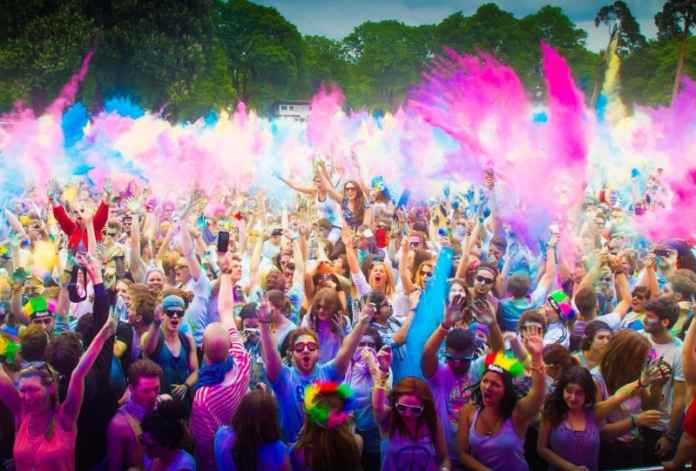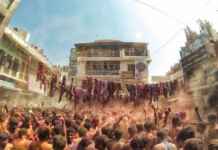Rightly nicknamed as the ‘festival of colours’, Holi is a spring festival mainly celebrated by people of Indian origin. From the 7th-century Sanskrit drama, Ratnavali to the Puranas, Dasakumara Charita, the festival of Holi has been mentioned in all of them. The very fact that it was mentioned by the poet Kālidāsa during the 4th century reign of Chandragupta II is testimony to how ancient the tradition of Holi has been in India.
The origins of the word Holi can be traced to Holika, who was the evil sister of demon king Hiranyakashipu. King Hiranyakashipu was blessed with special powers, making him virtually indestructible. He felt he was God, and demanded that everyone worship only him. His son, Prahlada, however, disagreed and remained a devout of Lord Vishnu instead. Nothing affected Prahlada’s resolve to do what he thought was right. Holika, Prahlada’s aunt, while wearing a cloak, tricked him into sitting on a pyre with her. However, it was Holika who burned in the fire and Prahlada survived. Vishnu appeared and killed Hiranyakashipu. Thus, a day before Holi is celebrated as Holika Dahan, as a reminder of the symbolic victory of good over evil.
There is another interesting legend associated with the festival of Holi. According to myths, Lord Krishna would always contemplate, if the gopis would like him. This was because of his characteristic dark blue skin color. His mother, tired of his grievances, tells Krishna to go and colour Radha’ face into whichever colour he desires. This playful coloring of the face of Radha, after which Radha and Krishna became a couple, has been commemorated as Holi since then. This is why in Braj, where Krishna grew, the festival is celebrated for sixteen days, in order to celebrate this divine communion.
Holi is celebrated at the end of the winter season, at the approach of vernal equinox. The festival date varies every year. As per the Hindu calendar it typically comes in March on the last full moon day of the lunar month Phalguna. Holika Dahan is a day before Holi. People gather around a bonfire, dance and sing, replicating the Holika legend symbolically.
On the day of Holi, the celebration begins in the morning itself, with people drenching each other in water and colours, also traditionally known as gulal. Children use water sprinklers, known as pichkari to play Holi. Gujiyas and mathri are the sweets traditionally associated with this festival. Bhaang, an addictive herb mixed in thandai is also an integral part of Holi celebrations. The festive mood continues till early afternoon after which people take a bath, followed by a long nap after cleaning themselves. In the evening, new clothes are worn and guests are invited over. A tika of gulal is put on everyone’s forehead by the elders.
The colourful vibrancy of the festival is such that it has been captured by directors on celluloid through numerous songs based on Holi. From Rang Barse to the latest Balam Pichkari, Holi has served as an important background for Hindi movies as well.










